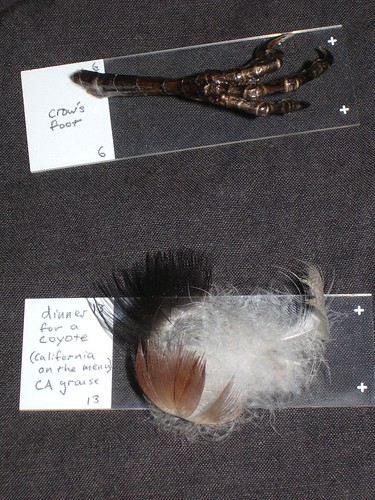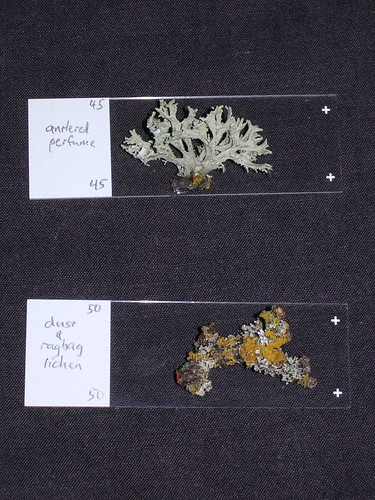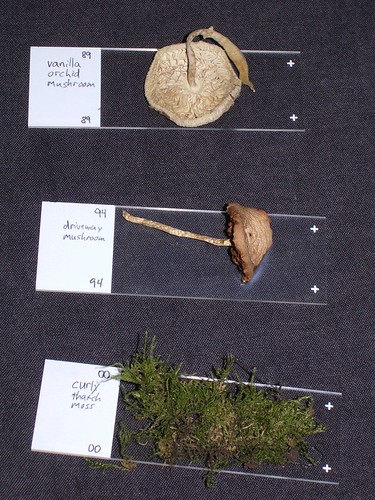A few weeks ago, University of Washington researchers issued a press release that they had found evidence that exposing very young children to educational videos actually
decreases vocabulary development. From
the Seattle PI story (adapted from the press release),
Overuse of baby videos may slow the growth of vocabulary among babies 8 months to 16 months old, but didn't have an effect on children from 17 months to 24 months. There is no reason to panic, researchers said, because babies are resilient, and there isn't evidence that videos cause permanent damage. The study didn't examine the effect of videos on older children.
After checking out the original paper, I concluded this is a very fair representation of the findings. I even made a mental note about the findings should I ever have young children. This news tidbit also came in handy during last weekend's NPR show, "Wait Wait, Don't Tell Me!" That's the typical science news release cycle.
Science to Press Release to National Syndication to Local Coverage to Useless Trivia.
Did the cycle end there? Well... I'm still writing.
It turns out that the researchers used that popular DVD series, "Baby Einstein" as their experimental group. Guess who makes "Baby Einstein." Your favorite multimedia conglomerate, Disney. (News Corporation is your
other favorite.) What did Disney have to say about this?
Baby Einstein said its products were designed to spur interaction between parents and their children, not as solitary experiences. "The entire Baby Einstein DVD collection is specifically designed to promote discovery and inspire new ways for parents and babies to interact -- such as clapping, pointing to objects and verbally interacting with their baby," the company said in a statement.
Okay, fair enough. But have you seen the packaging for these videos? That message must not have made it through marketing.
Fortunately for us, Seattle PI reporter Paul Nyham has done a great job following this story. Disney was not content to let some scientists hurt their sales, so what happened next? Strong-armed threats of course! Nyham describes Disney's actions
here, but for the full effect, read
Disney's letter. Unless you are in no mood for whiners. Disney makes a few minor points, but seems to have misinterpreted the right that scientists have to disseminate knowledge. Furthermore, the study was published after careful peer-review. Sure peer-review has its issues, but one of the best things about it is that it is free from corporate meddling. That's more than the US government can say about how drugs are approved and health guidelines are established!
As an advocate for scientific citizenship, there is no question where I stand on the importance of disseminating science. I am still critical of the press release mechanism for announcing science news, but right now, that's what we've got. As long as researchers have integrity in writing releases and reporters do some amount of background work, the system kindof works. So I was pleased to hear that the University of Washington decided to stand up to
Disney's thugs. From a new
PI report,
The University of Washington refused to withdraw a press summary of research on baby videos on Thursday, rejecting claims by Baby Einstein owner The Walt Disney Co. that the statement misrepresented the underlying research. "The researchers find no inconsistencies between the content of the news release and their paper. They believe the release accurately reflects the paper's conclusions and their commentary," UW president Mark Emmert wrote in a letter sent to Disney CEO Robert Iger.
If only the
UW would stand up to the RIAA and refuse to release private information about students to the multi-billion dollar recording industry.
 Evidently, today is BlogDay. The tradition of the day, as I learned from Mark at BlogFish is to alert readers to new ideas and new people. Here are some of the blogs I like to read and a few short reasons why.
Evidently, today is BlogDay. The tradition of the day, as I learned from Mark at BlogFish is to alert readers to new ideas and new people. Here are some of the blogs I like to read and a few short reasons why.

































